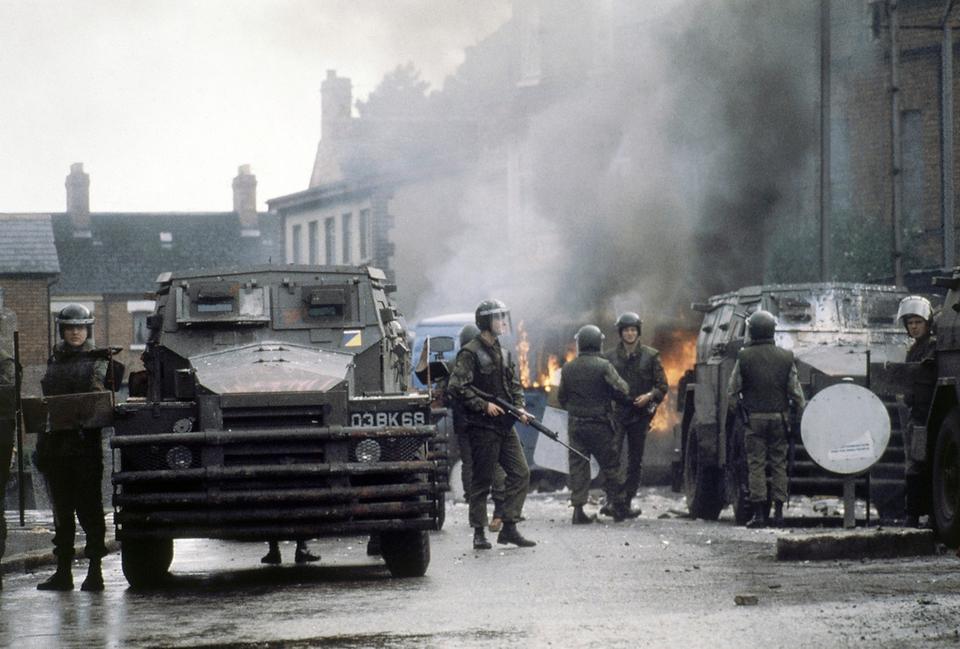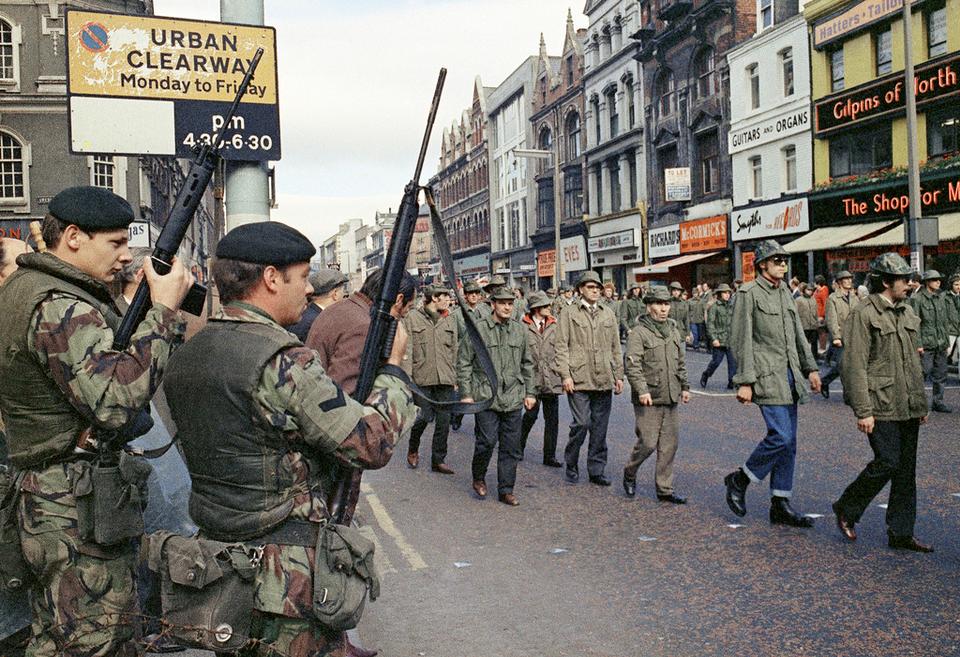Hailed as a milestone for peace in Northern Ireland, the deal remains hampered for various reasons.
The Good Friday Agreement was signed on April 10, 1998, a groundbreaking deal that put an end to hostilities in Northern Ireland and shaped its political spectrum.
Several world officials, including US President Joe Biden and former American President Bill Clinton, are set to visit the country to mark the agreement’s 25th anniversary.
The accord is seen as the main driver of Northern Ireland’s advancement toward a better future as it brought the British and Irish governments and local political factions to the dialogue table.
Decades later, however, the agreement is seen to have become fragile in light of several unresolved tensions in the region.
The historical differences between the Protestants and Catholics in Northern Ireland date back centuries.
The core of the dispute dates back to 1921, when Northern Ireland was created and remained affiliated with the United Kingdom on the Atlantic island. The rest of the island was represented by the Republic of Ireland as an independent nation state.
Unionists, who represent the majority of Northern Ireland, defended being part of the UK and nationalists advocated for a merger with the Republic of Ireland.
For several decades, nationalist Catholic communities have faced discrimination by unionist Protestant-dominated governments in public spheres, as they were not able to obtain government jobs.
The controversy turned deadly in the late 1960s when paramilitary groups from both sides – the nationalist Irish Republican Army and unionist Ulster Volunteer Force – carried out bombings and shootings that led British troops to intervene in the conflict.

Why GFA is important
The deal, also known as Belfast Agreement, brought an end to three decades of sectarian conflict, better known as “The Troubles”. The conflict has claimed over 3,500 lives, while 50,000 were injured.
Political leaders from all sides have emphasised the importance of the agreement in maintaining peace and stability in the region, and there have been calls for the agreement to be strengthened and built upon in the years to come.
Although sporadic violence occurred in the initial years following the agreement, the overall violence has reduced substantially.
It created a framework that sets up a power-sharing governance system between Unionist and Nationalist communities to ensure both had a voice in the running of the island that created two political parties: the Democratic Unionist Party (DUP) and Sinn Fein.
It also founded a united police service that aimed at decommissioning paramilitary weapons and agreed political prisoners be freed which has been seen as a peace-building move.
The accord which was endorsed by the majority in a referendum held in May 1998, also was recognising th right of the citizens to decide the country’s future by a referendum rather than the governments of Northern Ireland or the UK.

Solving post-Brexit problems
To clear the ambiguity after the historic Brexit decision, Northern Ireland stayed only part of the UK that borders a European Union member – the Republic of Ireland.
Transport of goods between Northern Ireland and the Republic of Ireland faced new rules and multiple checkpoints.
The UK government has been voicing dissatisfaction with the rules of the Good Friday Agreement after Brexit and has been proposing a new deal.
After hectic negotiations, Northern Ireland has in effect remained in the EU’s single market for goods. Goods coming from England, Scotland, and Wales will face customs checks, tariffs and new paperwork. The new protocol specifically designed for Northern Ireland came into force on January 1, 2021.
Sinn Fein sees the plan as part of saving the agreement and supported it. But unionists disagree and say that it undermines the accord because it separates Northern Ireland from the rest of the UK.
There has been no agreed-upon government since February 2022 due to the fact that the Unionists have declined to participate in a power-sharing administration.
In February 2023, the European Union and the United Kingdom came to an agreement to revise the protocol and officially signed a new agreement, known as the Windsor Framework. As per this new deal, the amount of inspections carried out on goods entering Northern Ireland from Great Britain has notably decreased.
The UK and EU have officially accepted the framework; however, the DUP has declared that they will require some time to make a decision regarding their support for the agreement and their potential participation in the power-sharing government in Northern Ireland.

Is the accord in danger
Every year the agreement is marked with celebrations since it paved the way for peace in the region.
In 2021, however, the unrest in the capital Belfast revealed the social faultlines. The demonstrations carried out against the post-Brexit situation and Covid rules
left 74 police officers injured.
Last month, the UK government upgraded their terrorism threat level for Northern Ireland from “substantial” to “severe”. One of the key issues is how to deal with the legacy of The Troubles, including unresolved cases of violence and human rights abuses. Another challenge is the ongoing issue of sectarianism, which continues to divide the Unionist and Nationalist communities in Northern Ireland.
The Brexit process has also created new challenges for the agreement, as it has raised questions about the future of the border between Northern Ireland and the Republic of Ireland.
Source: TRTWorld and agencies
25 years to the day: Good Friday Agreement remains precarious
Source: News Achor Trending
0 Comments